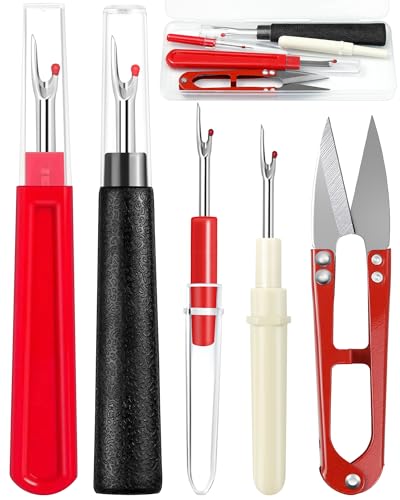Ever had your sewing machine skip a stitch right when you need it most? It can be frustrating, but don’t worry—you’re not alone. Skipped stitches are a common issue that many sewists face at some point.
When your machine skips stitches, it can throw off your entire project. Whether you’re a beginner or a seasoned pro, knowing how to troubleshoot and fix the problem quickly will keep your sewing sessions smooth and enjoyable. In this guide, you’ll discover simple steps to identify the cause and get your machine back on track.
Understanding Skipped Stitches
- Thread Tension: Incorrect tension settings lead to uneven stitch formation.
- Needle Problems: A dull or bent needle often results in missed stitches.
- Thread Quality: Low-quality or incompatible threads may not feed properly.
- Bobbin Issues: An improperly wound or inserted bobbin causes thread jams.
- Fabric Type: Using fabrics that are too thick or slippery challenges the machine’s mechanics.
- Machine Maintenance: Lack of regular cleaning and lubrication interferes with stitch consistency.
Common Causes Of Skipped Stitches
Skipped stitches disrupt your sewing flow and can affect the quality of your projects. Understanding the common causes helps you troubleshoot effectively.
Thread Tension Issues
Improper thread tension often leads to skipped stitches. If the upper tension is too tight or too loose, it can prevent the needle from forming consistent loops with the bobbin thread. To adjust:
- Upper Tension: Locate the tension dial and make small adjustments. Test on a scrap fabric to ensure balanced tension.
- Bobbin Tension: Check the bobbin case to ensure it’s correctly inserted and the thread is wound evenly.
Consistent thread tension ensures smooth stitch formation and prevents skipping.
Worn-Out Needles
Dull or bent needles are a frequent cause of skipped stitches. Over time, needles lose their sharpness, making it difficult to penetrate fabric smoothly. Signs of worn needles include:
- Dull Point: Creates jagged holes in fabric.
- Bent Shank: Causes uneven stitching and skipped stitches.
Replace needles after every several hours of sewing or when you notice any damage. Using the correct needle type for your fabric also minimizes skipping.
Incorrect Machine Settings
Improper machine settings can cause your machine to skip stitches. Key settings to review include:
- Stitch Length and Width: Ensure they’re appropriate for your fabric type. For example, heavier fabrics require longer stitch lengths.
- Presser Foot Pressure: Adjusting the pressure can help manage different fabric thicknesses.
- Feed Dog Adjustment: If the feed dogs are not properly aligned, fabric feed can be inconsistent, leading to skipped stitches.
Consult your machine’s manual to verify and adjust settings correctly for optimal performance.
How To Fix Skipped Stitches
Skipped stitches can halt your sewing project, but fixing them is straightforward with the right steps. Follow these solutions to get your machine back on track.
Adjusting Thread Tension
Proper thread tension ensures even stitch formation. To adjust it:
- Upper Thread Tension: Locate the tension dial on your machine. Start at the middle setting, then test and adjust incrementally up or down based on your fabric and thread type.
- Bobbin Tension: Open the bobbin case and check the tension spring. Replace the bobbin if it’s wound too tightly or loosely.
- Even Tension: Ensure both upper and bobbin threads interact smoothly. Thread your machine correctly, following the manual’s guidelines.
Replacing The Needle
A faulty needle can cause skipped stitches. To replace it:
- Choose the Right Needle: Select a needle suitable for your fabric type—use a universal needle for general sewing or a specialized one for specific materials like denim or silk.
- Check the Needle Condition: Inspect for bends, dullness, or damage. A damaged needle disrupts thread flow and stitch formation.
- Install Correctly: Insert the needle fully into the needle clamp, tighten it securely, and ensure the flat side faces the correct direction as per your machine’s requirements.
Cleaning And Maintenance
- Remove Lint and Debris: Open the bobbin area and use a small brush to clear away lint. Pay attention to the feed dogs and surrounding plates.
- Oil the Machine: Apply sewing machine oil to the recommended points, avoiding over-oiling which can attract more lint.
- Regular Servicing: Schedule professional cleanings periodically. Lubrication and part checks by a technician prevent long-term issues and maintain optimal performance.
Preventing Future Skips
Maintaining your sewing machine ensures consistent stitch quality. Implement these strategies to minimize skipped stitches.
Regular Machine Maintenance
- Clean frequently: Remove lint and debris after each use to prevent buildup.
- Oil appropriately: Apply machine oil as per the manufacturer’s guidelines to keep moving parts smooth.
- Inspect parts: Check needles, bobbins, and feed dogs regularly for signs of wear or damage.
- Replace worn components: Change needles after 8 hours of use or when they show signs of dullness or bending.
- Schedule professional servicing: Have your machine professionally cleaned and serviced at least once a year to maintain optimal performance.
Using Quality Threads And Fabrics
- Select high-quality threads: Use thread types recommended by your machine’s manufacturer to ensure compatibility.
- Match threads to fabrics: Choose threads that complement your fabric type, such as polyester for stretchy materials or cotton for natural fibers.
- Avoid low-twist threads: Low-twist threads can cause tangling and skipping; opt for higher-twist options for smoother stitching.
- Test thread tension: Adjust tension settings when switching thread types to maintain balanced stitches.
- Store threads properly: Keep threads in a cool, dry place to prevent moisture absorption and thread degradation.
Implementing regular maintenance and using quality threads and fabrics will enhance your sewing experience, reducing the likelihood of skipped stitches and ensuring your projects turn out flawlessly.

Conclusion
Skipped stitches can definitely slow you down but they’re easily handled with the right approach Keep your machine in top shape and choose the right materials to keep your projects moving smoothly Remember sewing is all about patience and practice Each challenge you overcome makes you a better sewist Keep enjoying your creative journey and don’t let a few skipped stitches stop you You’ve got this

















